#studies
IIHS Denounces Concept of Total Safety From Autonomous Cars
When the United States began passing legislation allowing automakers to begin testing self-driving vehicles on public roads, it was framed almost entirely as a safety issue. Proponents claimed that the only way to eliminate roadway fatalities was to take the human brain out of the equation and let cars drive themselves. Having enacted a similar no-thinking policy themselves, legislators agreed — pleased to have ensured a death-free future on little more than empty corporate promises.
At the time, we were still complaining about the unreliable nature of advanced driving aids, and how such systems seem custom-made to dull your reflexes behind the wheel. There was a sense that, if everything went perfectly, maybe autonomous vehicles (AVs) could reduce accidents by previously unheard of levels. That feeling didn’t last particularly long here at TTAC and, by 2018, we started noticing we weren’t alone.
The Insurance Institute for Highway Safety (IIHS) grew increasingly critical of AVs starting a couple of years ago. On Thursday, it released a report claiming the idea of a no-crash future spurred by automation is a fantasy. Instead, the IIHS says cutting-edge technology will likely struggle to stop just a third of all accidents.
Report: Virus to Clobber EVs in the Short Term, and Then…?
The analysts at BloombergNEF foresee a rough year ahead for global auto sales, putting their crystal ball in alignment with everyone else’s. Hardly a shock that the worst pandemic in a century would weigh heavily on consumer spending and confidence.
For electric vehicles, however, the virus stands to rock this segment’s boat to a lesser degree than its mainstream counterparts — which isn’t to say there’s smooth sailing ahead.
Three Makes a Trend: Traffic Deaths Down Again
What this spring needed was more talk of sudden death. So here you go.
According to preliminary estimates released by the National Highway Traffic Safety Administration, fewer people died in highway crashes in 2019 — pushing the nation’s death rate down even further from a modern-era high point reached in 2016.
While data from the Fatality Analysis Reporting System (FARS) does seem to indicate a third straight year of decline, we’re still a ways off from numbers reached just a handful of years ago.
As ATPs Rise and Loan Terms Grow Obese, Trade-ins Are Less of a Trade-off
Auto loan terms have been creeping up for as long as anyone can remember. Back in 1997, the average financing period on a new car was somewhere around 54 months. That crept up to over 60 months by 2004 and has only continued to climb. Over the past decade, the typical automotive loan term has ballooned by almost 30 percent. According to an analysis by Edmunds, the average financing period on a new vehicle sold in the United States surpassed 70 months in March of 2020.
While automakers’ recent introduction of loans extending up to 7 years (especially now that COVID-19 is hampering sales) has exacerbated the issue, we were already sitting on a 69-month average in October of 2019. Why would someone voluntarily agree to such a lengthy agreement? They may not have much of an alternative due to similar growth in vehicle transaction prices.
Silver Linings: COVID-19 Thinning Traffic Across the Country
Road traffic across the United States is dropping drastically, thanks to social-distancing efforts taking place to combat the spread of the novel coronavirus. For yours truly, traffic in New York City has gone from frequently hectic to downright pleasurable and relaxed. While there’s a statewide initiative in place to keep residents in their homes, the days leading up to the shelter-in-place order saw a decline in roadway activity I’d only previously witnessed during Hurricane Sandy.
According to INRIX, a Washington-based firm providing traffic analytics, road use in the United States dropped by about 30 percent last week — with regions affected by state-mandated shutdowns seeing even larger declines. The study compares the national traffic volume from the 14th to the 20th of March to volumes recorded between the 22nd and the 28th of February — noting that March 13th was the first day traffic started trending downward in most regions. Moving forward, INRIX says it wants to continue offering up a weekly synopsis of national traffic volume until the health crisis ends.
Study: Ram No. 1 on Young Truck Shoppers' Lists
Domestic automakers are enamored with the full-sized pickup segment because it’s a reliable way of securing hundreds of thousands of sales in North America on an annual basis. Here, Ford’s F-Series reigns supreme. That might not always be the case, however, especially with younger buyers opting to purchase their pickups at competing brands.
Last month, Edmunds released a study claiming Ram is leading the charge with buyers under 35 — saying the brand had won over “the most coveted section of the market.”
Annoy the Driver: IIHS Offers Its Two Cents on Improving Self-Driving Safety
The Insurance Institute for Highway Safety (IIHS) has issued a set of guidelines for advanced driving aids, suggesting that the key to automated safety is making sure drivers are perpetually engaged with the vehicle’s operations. Unfortunately, this has turned out to be a Catch-22 scenario due to the way these systems function. Semi-autonomous features are supposed to be there to help promote safety by adding an extra layer of protection; however, many encourage motorists to disengage by nature of their design.
Adaptive cruise control with lane keeping is probably the worst offender. Implemented as a way to keep cars a safe distance apart on the expressway, it offers an experience that borders on having the car chauffeur you around. The effectiveness of these systems vary widely, with none actually being capable of any legitimate self-driving functionality. You’re also not supposed to be able to tune out while they’re in use, but they all seem coyly contrived to do exactly that. The IIHS is concerned this phenomenon will only get worse as driving aids evolve and become increasingly commonplace.
“Unfortunately, the more sophisticated and reliable automation becomes, the more difficult it is for drivers to stay focused on what the vehicle is doing,” said IIHS President David Harkey. “That’s why systems should be designed to keep drivers actively engaged.”
Study Suggests Tires Create More Pollution Than Exhaust Emissions
Anyone who’s laid a substantial amount of rubber in a local parking lot will tell you that the scent emitted doesn’t smell particularly healthy for the environment (burnt clutch smell is even less appealing — don’t ask how I know). And while the typical driver doesn’t burn through tires via successive smoke shows, regular road use effectively does the same thing over a much longer timeline — and a new study claims it’s up to 1,000 times worse than what actually comes out of a vehicle’s exhaust system.
The report, penned by UK-based independent research firm Emissions Analytics, has circulated within the media for a few days and claims that pollution stemming from tire and brake wear is a growing problem. With European lawmakers clamping down on tailpipe emissions, the firm suggests “non-exhaust emissions” will be the next big regulatory challenge.
U.S. Traffic Deaths Decline for Second Year in a Row
The National Safety Council just released its estimates for U.S. roadway fatalities in 2019, and there’s good news to share. Deaths declined for the second consecutive year. According to the NSC, traffic fatalities reached an estimated 38,800 last year, representing a 2-percent decline from 2018 and and a 4-percent decline against 2017.
While the NSC said the decline came “after several years of spikes,” we found the claim to be mildly misleading. Even though 2015 and 2016 posted meaningful increases in roadway deaths, safer streets have been in fashion since the 1970s. Most years since then have resulted in fewer crashes, with sporadic bad periods sprinkled throughout. If you’re interested in some supporting data from the National Highway Traffic Safety Administration, U.S. roadway fatalities per 100,000 people averaged around 26.01 in 1972. That figure fell to just 10.28 by 2014, with the combined 2015-2016 increases bumping it up to just 11.59 per 100,000 people.
Report: U.S. Dealerships Shrinking in Number, Throughput Down for 2019
The annual Automotive Franchise Activity Report asserts that the number of new-car dealerships in the United States has shrunk for the first time since 2013. The difference is marginal when viewed from a national perspective, but could support prior theories that larger dealer networks are consolidating while smaller, less competitive shops are being forced out of the market. The report claims the total number of storefronts fell from 18,294 in 2018 to 18,195 at the start of 2020. Dealership throughput was similarly down, decreasing by eight units from 2018 to 940.
While not particularly alarming, the figures do seem to mirror national population trends when placed under a microscope. The states that lost the highest number of showrooms tended to be regions that had the most trouble preventing people from moving.
Millennials Now Positioned to Save U.S. Auto Market?
With nearly a decade’s worth of articles suggesting millennials never liked cars and are an industry boat anchor in waiting, a new report claims they may actually be the group that saves it. Using the same data from the Department of Transportation/Federal Highway Administration that showed present-day teens holding off on getting their driver’s license, the report placed Bloomberg under the impression that millennials will pick up the slack once they start cranking out offspring.
Millennials never actually hated cars. They’ve simply been, on average, too poor harness the same purchasing power of their ancestors, forcing them to put off major life decisions like getting married, having kids, buying a home and/or purchasing a new automobile. While some assuredly prefer public transit for environmental or social reasons, plenty of this has nothing to do with personal preference. The good news is that this fact appears to be reflected in the number of licensed drivers among their ranks, now that they’re getting a little older.
Why Are Teens Growing Disinterested in Automobiles?
When I was an adolescent, it was made clear to me that the first step toward adulthood was getting my driver’s license. Even without an automobile, it provided unimaginable freedoms and brought me closer to my goal of doing a burnout in the high school parking lot. That dream was ultimately achieved, leaving me to rethink roadway safety as my first car was loaded onto a flatbed while the scent of tire smoke and bleach clung to my clothing.
Fortunately, hitching a ride home was easy, as most of my friends had also acquired licenses and cars of their own. But that’s probably not going to be the case for teens coming of driving age in these modern times.
According to the Federal Highway Administration, the percentage of American teenagers bothering to get their licenses has effectively plateaued at a low point. Nearly 48 percent of 16-year-olds in this country could legally drive in 1984; that number settled to just 25.6 percent in 2018. The reasons are more complicated than just the younger generation’s snubbing of the automobile.
Newly Released Uber Safety Report Focuses On Sexual Misconduct, Murder
Uber released its first safety report on Saturday, primarily to address concerns surrounding rider welfare. The media has become increasingly critical of Uber as a brand after its corporate culture was dubbed toxic — allegedly loaded with sexism and financial progress by any means necessary. Following a fatal accident involving one of the company’s autonomous test vehicles, many grew fearful that the company hadn’t fallen into the habit of promoting (or appreciating) public safety. Hoping to assuage some of those concerns, Uber put together its own safety report.
Earlier in the month, the ride-hailing service said it had received reports of 3,045 sexual assaults in the United States in 2018, with 9 people murdered (nearly half of them drivers… fortunately?) and 58 crash-related deaths. Uber said these issues only affected 0.0002 percent of the 1.3 billion rides the company orchestrated in the United States that year.
The new study attempts to frame data, accumulated over 21 months, against national averages to show that Uber is simply suffering from issues inherent to our society. While noting that an estimated 44 percent of women in the U.S. have been a victim of sexual violence seems like an odd way to absolve oneself from wrongdoing, Uber’s just a fancy cab service trying to distance itself from systemic fears that may have not have been entirely fair.
Survey: EV Interest Varies Wildly Between Nations, Ditto for Shared Ownership
If you follow the automotive industry at all, you’re undoubtedly aware that the United States is a region that hasn’t quite embraced automotive electrification on the same level as the rest of the developed world. Americans travel longer distances and have particular tastes, making EVs more popular in places like Europe and China. It also hasn’t passed the same sweeping regulations to ensure their advancement.
Whatever the cause, a new survey from London-based OC&C Strategy Consultants attempted to tabulate the disparity — asking 2,000 consumers (apiece) in the U.S., China, Germany, France and United Kingdom between March and April of 2019.
Their findings? Only about half of the surveyed Americans felt EVs were worth their consideration as a potential successor to their current ride. In China, 90 percent said they would seriously consider buying electric. Between 64 and 77 percent of respondents in Europe said the same (depending on country).
NICB Says Auto Theft Down for 2018, Lists Most-stolen Models
The National Insurance Crime Bureau (NICB) released its annual Hot Wheels report this month. The good news is that auto thefts declined in 2018, according to the FBI.
The bad news? NICB is still doing a running tally of all the rides ripped away from their owners, putting the 2000 model-year Honda Civic on top. It was followed closely by the 1997 Honda Accord. Fortunately, the NICB also kept track of the 2018 model year specifically, proving that the nation’s most-stolen automobiles continue to be the ones that sell the best.
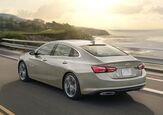
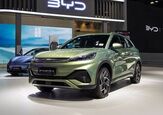
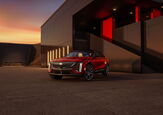

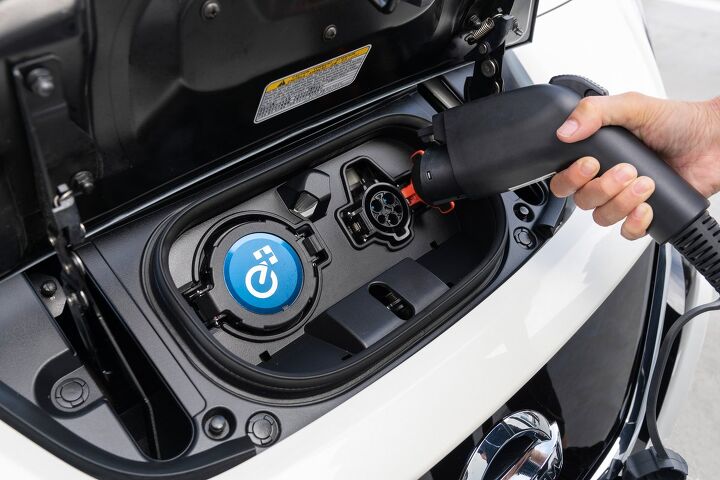



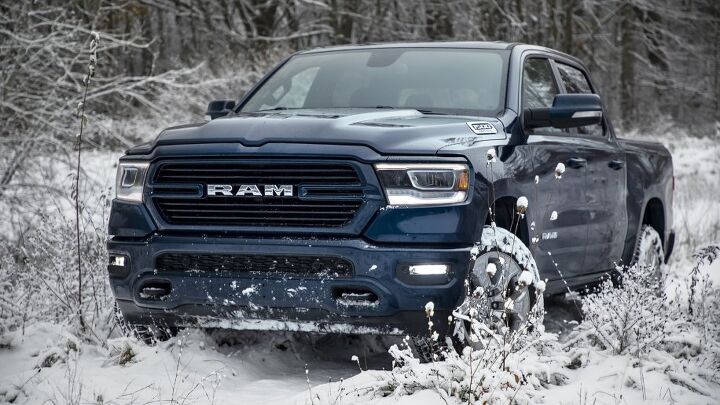








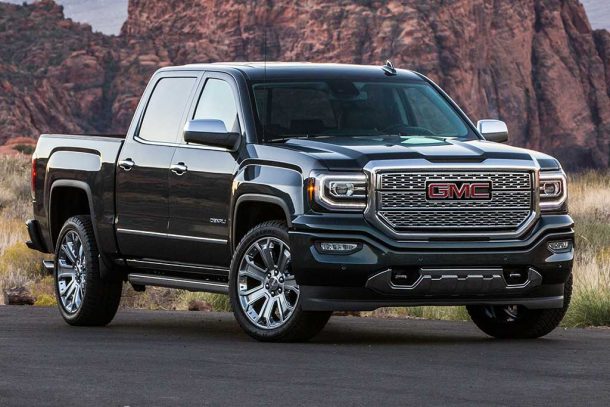












Recent Comments